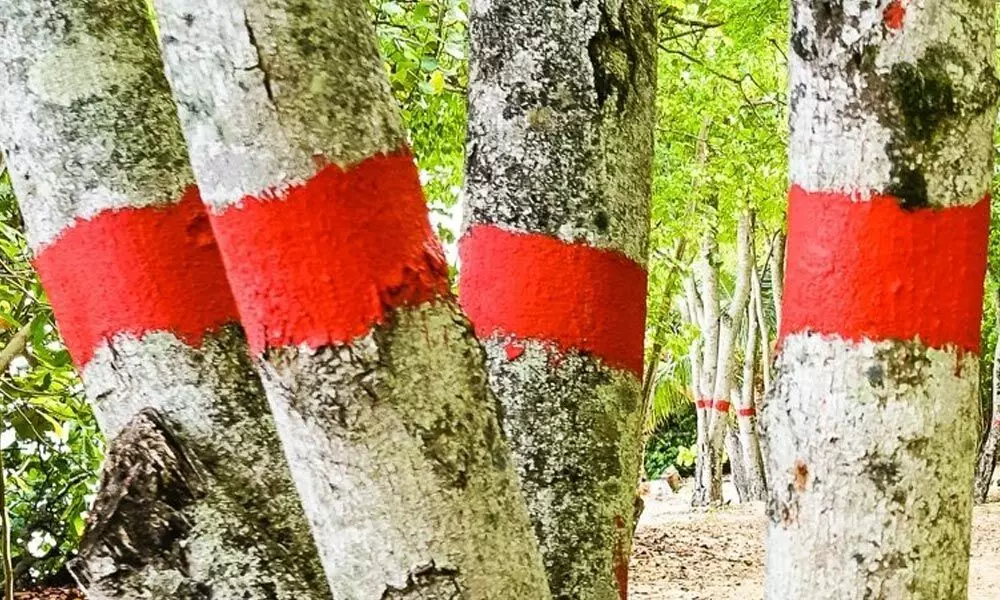Single Touch Of The 'Tree of Death' Can Become Very Deadly

A manchineel tree painted red as a warning sign. (Severine BAUR/Getty Images)
- Nicola Strickland, a radiologist, took a vacation to Tobago in the Caribbean in 1999, a tropical paradise with lovely, uninhabited beaches.
- In Spanish, the plant is known as 'arbol de la muerte,' which translates to 'tree of death.'
In Spanish, the plant is known as 'arbol de la muerte,' which translates to 'tree of death.' The manchineel tree is the most deadly tree in the planet, according to Guinness World Records. All portions of the manchineel tree are exceedingly dangerous, according to the Florida Institute of Food and Agricultural Sciences, and contact with and consumption of any part of this tree may be deadly.
Nicola Strickland, a radiologist, took a vacation to Tobago in the Caribbean in 1999, a tropical paradise with lovely, uninhabited beaches. She began hunting for shells and corals in the white sand on her first morning there, but the vacation rapidly turned sour.
Strickland and her companion discovered some sweet-smelling green fruit that looked like miniature crabapples scattered amid the coconuts and mangoes on the beach. Both of them made the mistake of taking a taste. The pleasantly sweet flavour was quickly overtaken by a peppery, burning sensation in the throat, as well as a painful constriction in the throat that worsened to the point where the women could not swallow.
Manchineel is a member of the Euphorbia genus, which also includes the festive Christmas poinsettia. The tree generates a viscous, milky sap that seeps out of everything the bark, the leaves, and even the fruit and can inflict severe, blister-like burns if it comes into touch with flesh. Since the sap contains a variety of poisons, the most significant reactions are thought to be caused by phorbol, a chemical molecule that belongs to the diterpene family of esters.
The smoke of burning manchineel wood has been linked to severe eye inflammation and even temporary blindness, not to mention the effects of inhaling the substance.
Caribbean carpenters, on the other hand, have used manchineel wood in furniture for ages after cutting it properly and drying it in the sun to counteract the poisonous sap. The BBC's Ella Davies explains, "The true lethal threat comes from eating its little round fruit.
Fortunately, Strickland and her buddy survived because they only ate a small portion of the fatal apple. Strickland detailed her symptoms in a letter published in The British Medical Journal in 2000. Their agony gradually faded over the course of eight hours, as they sipped pina coladas and milk with care. The toxin then drained into their lymph nodes in their necks, causing even more pain.
Next Story


















